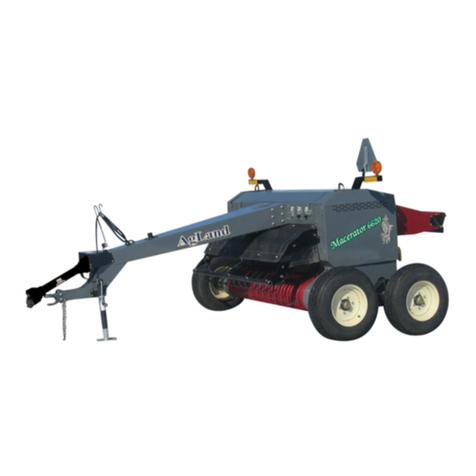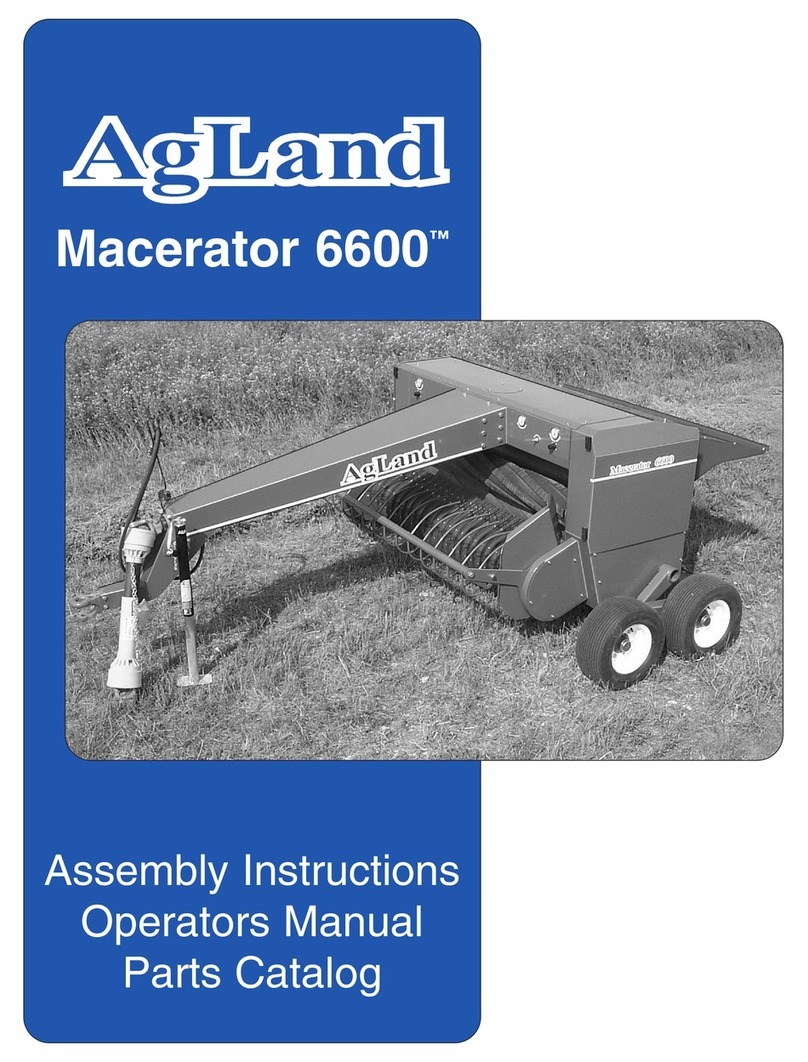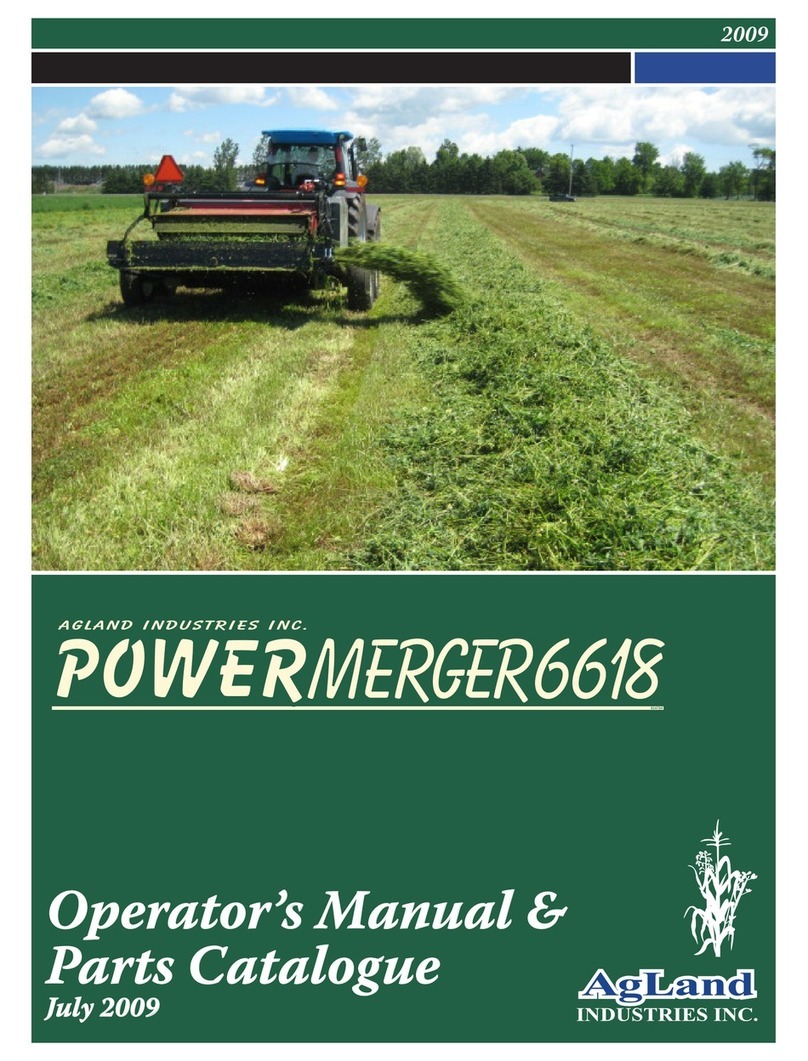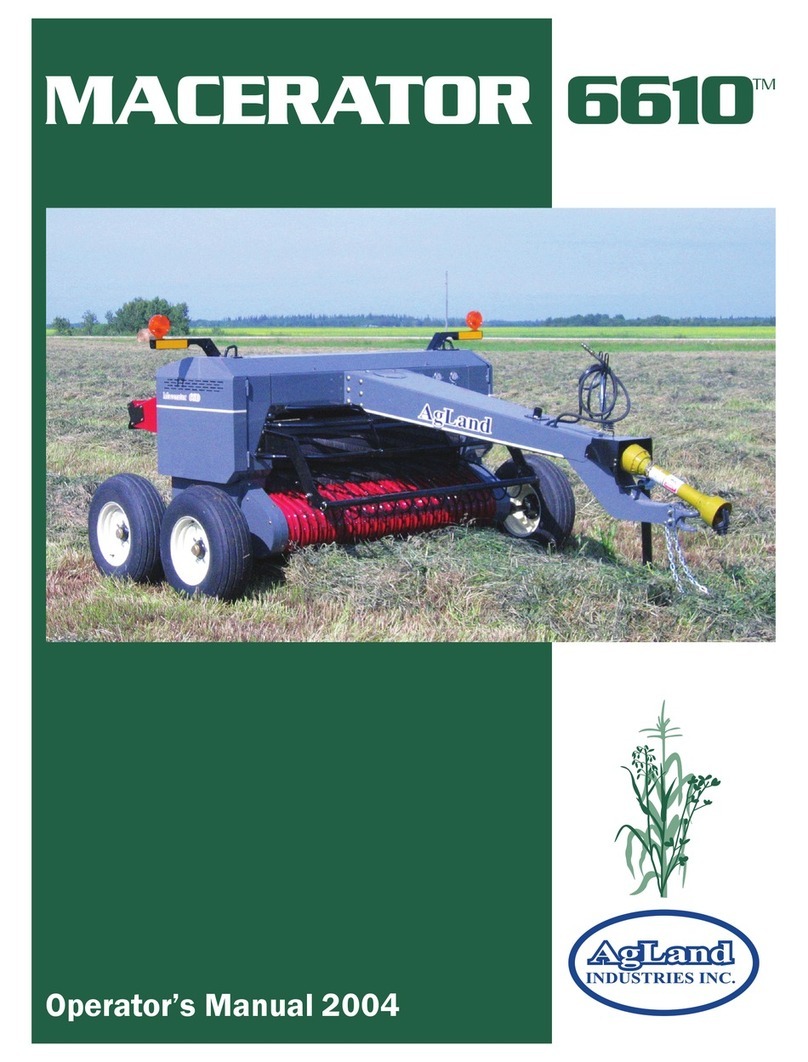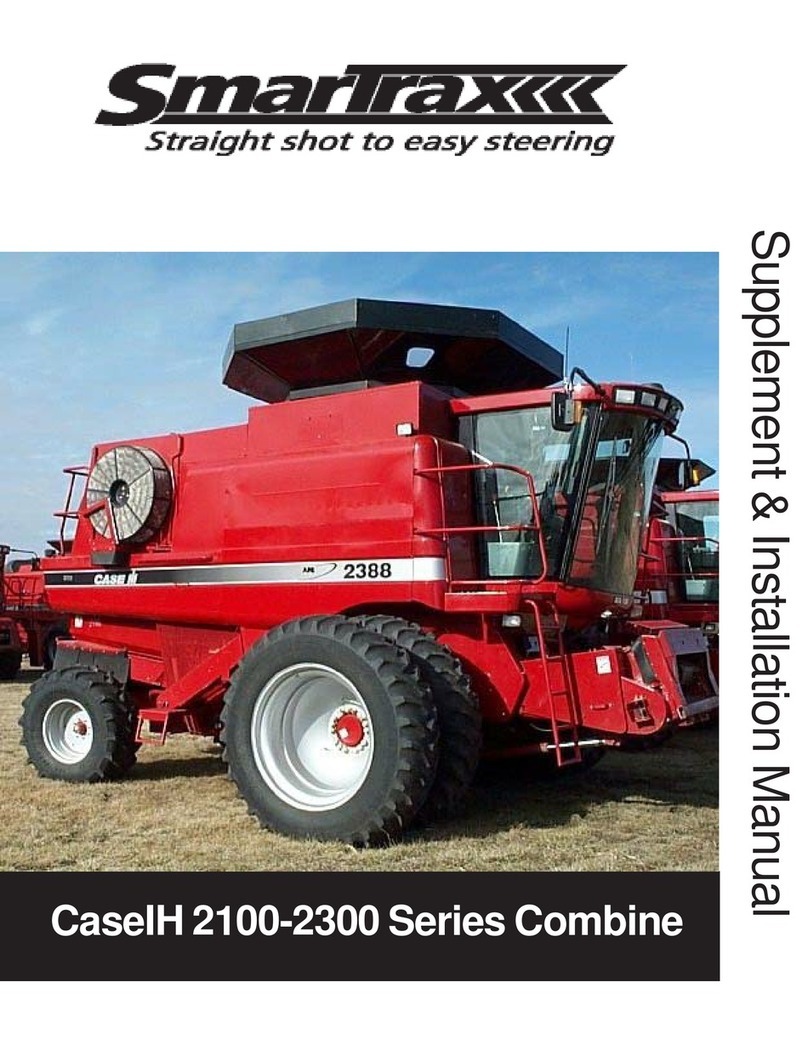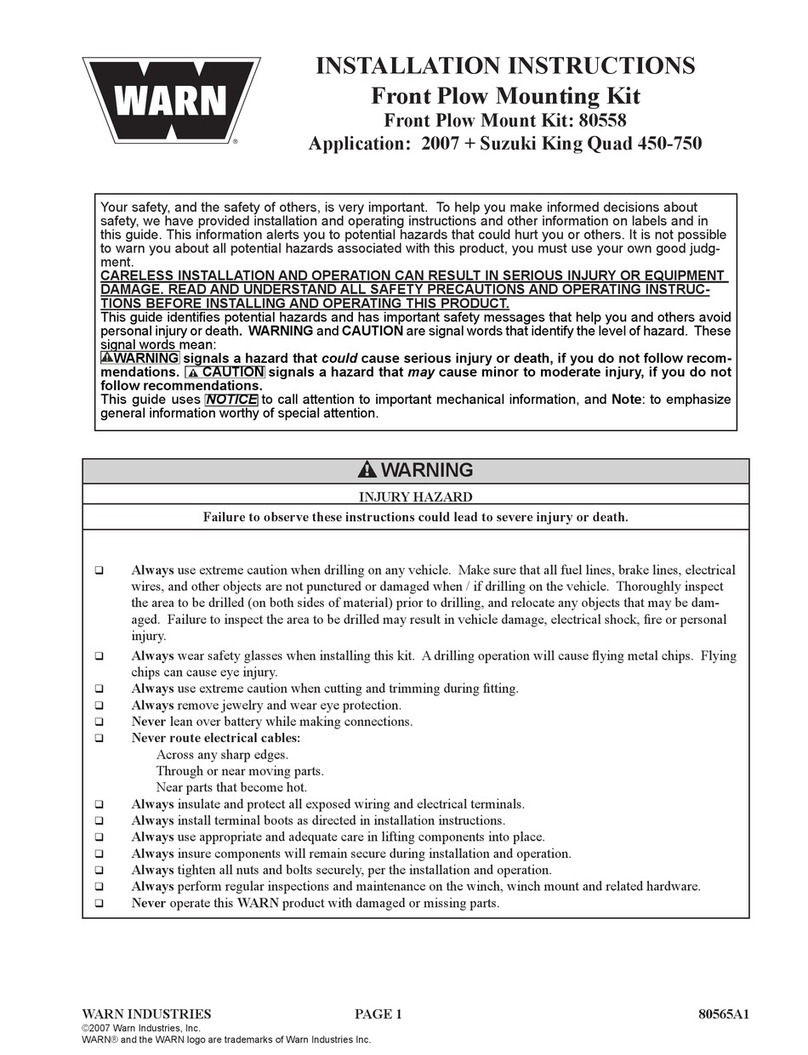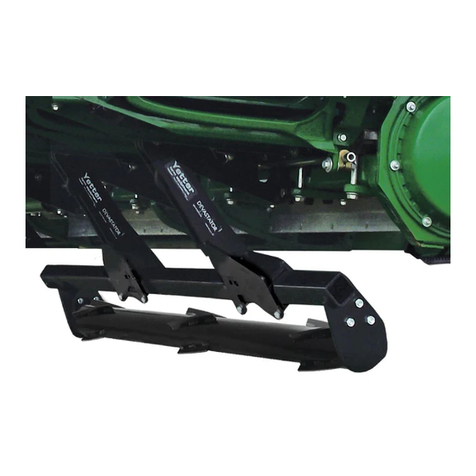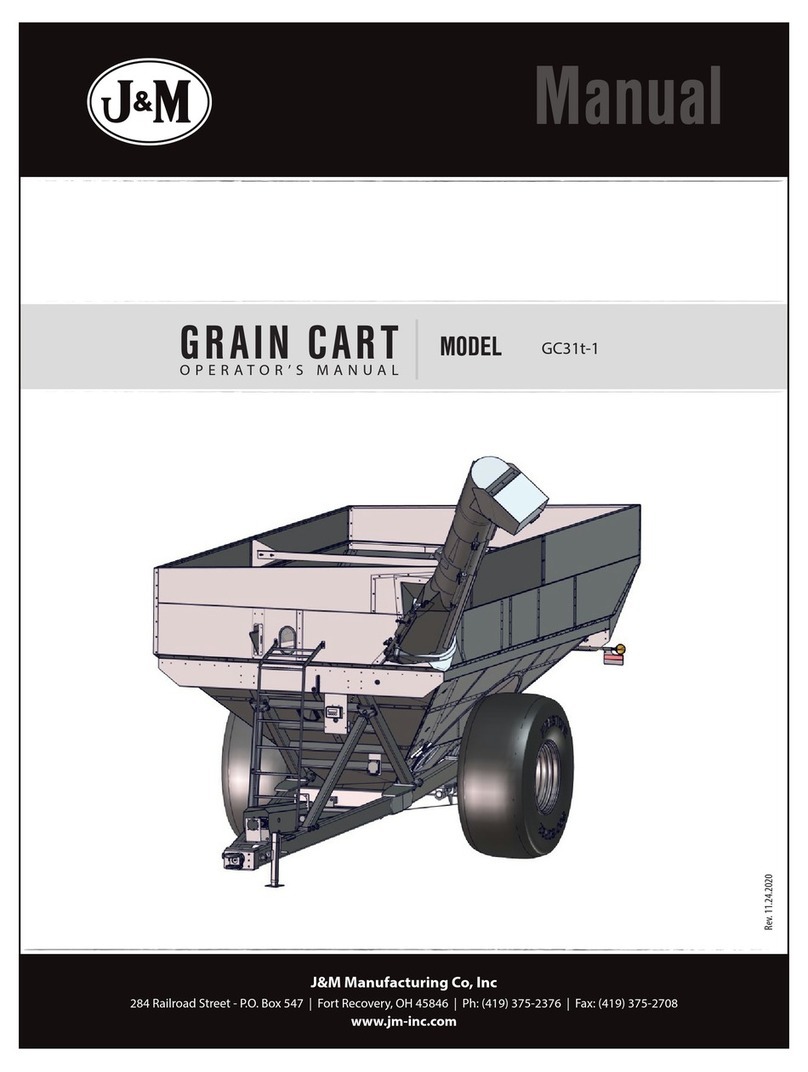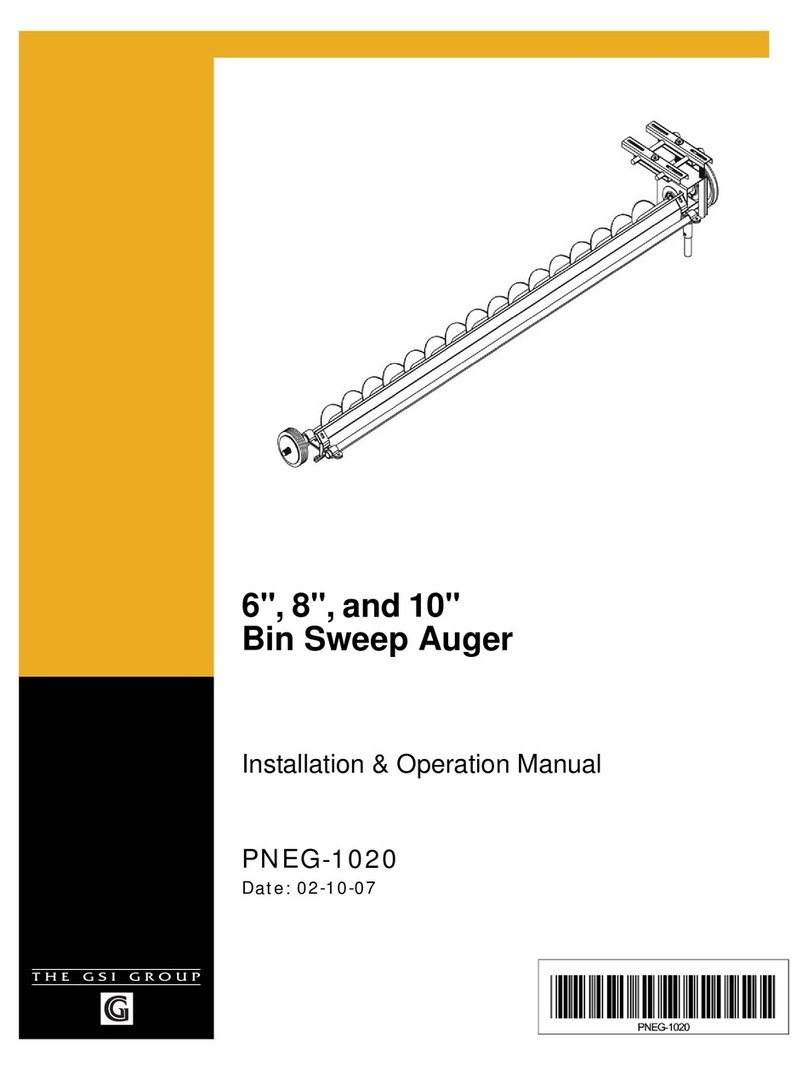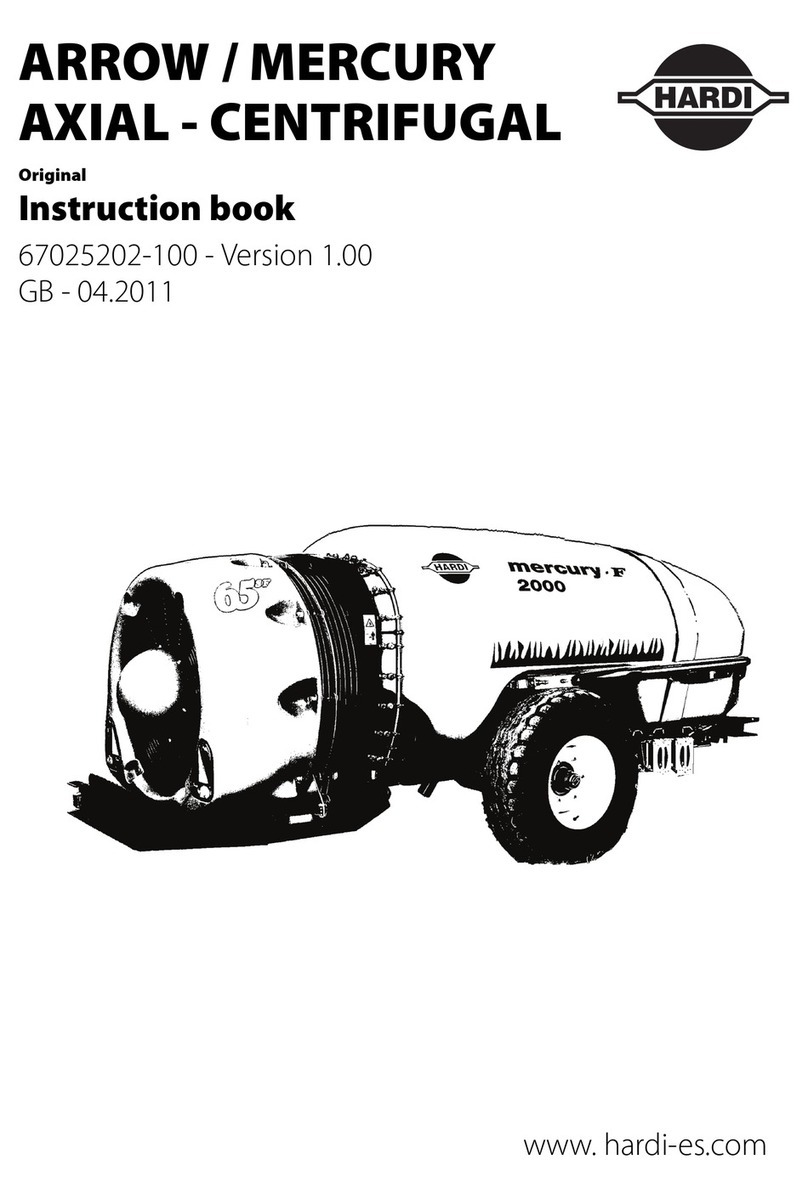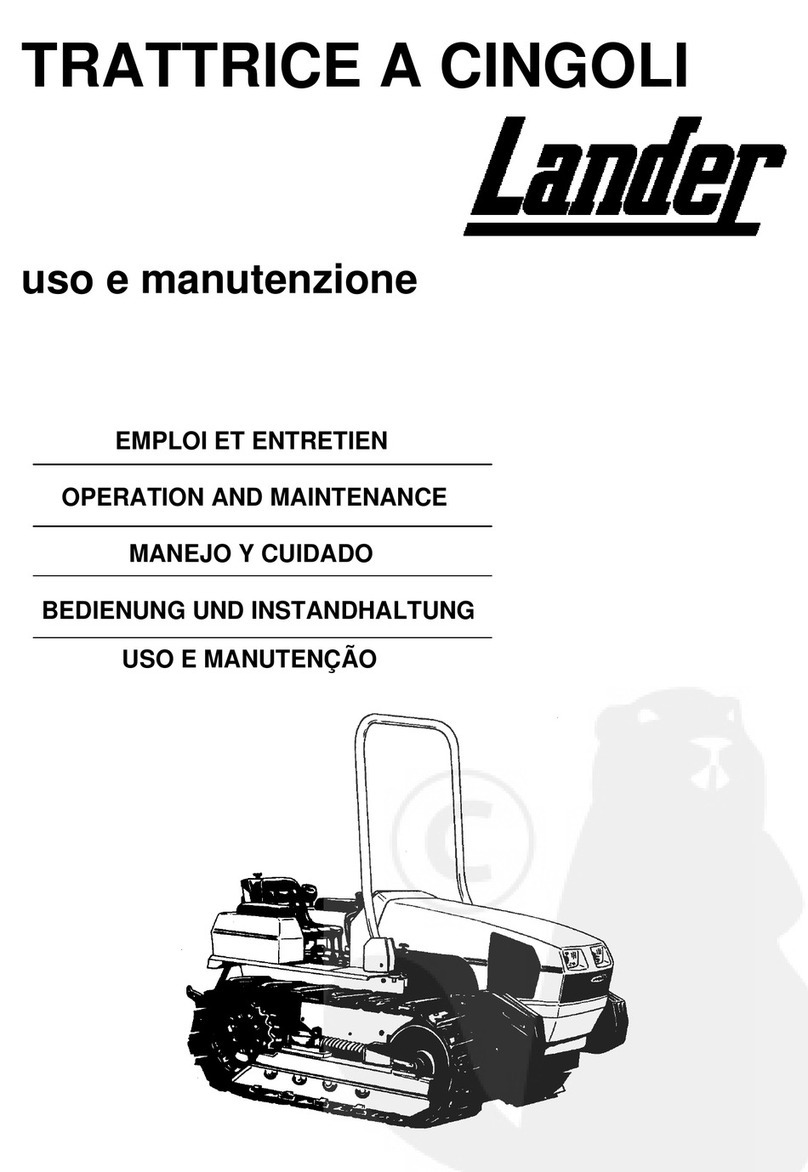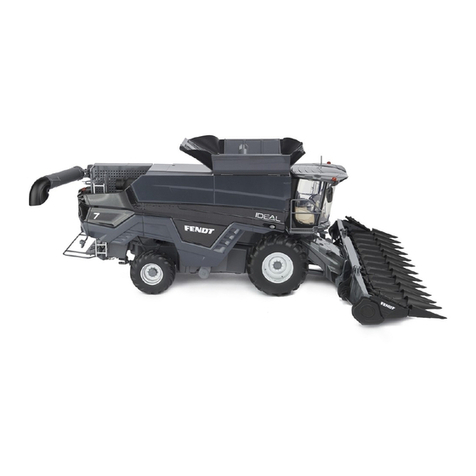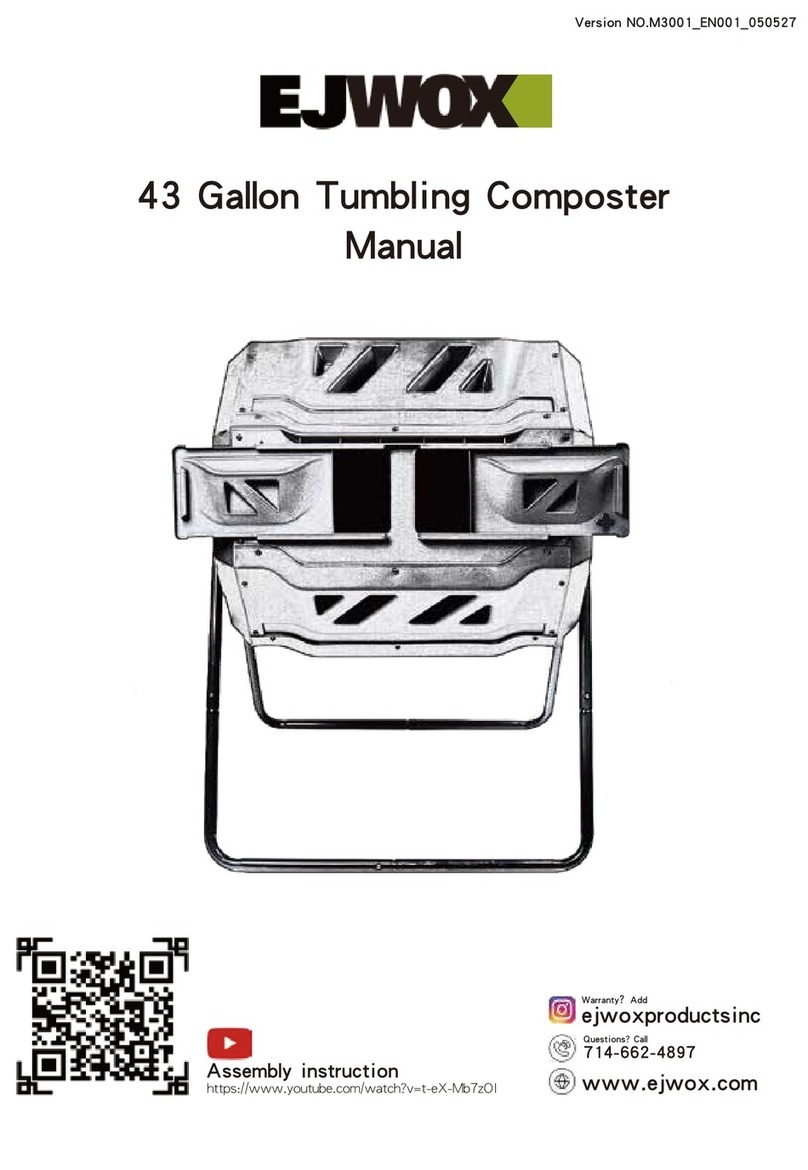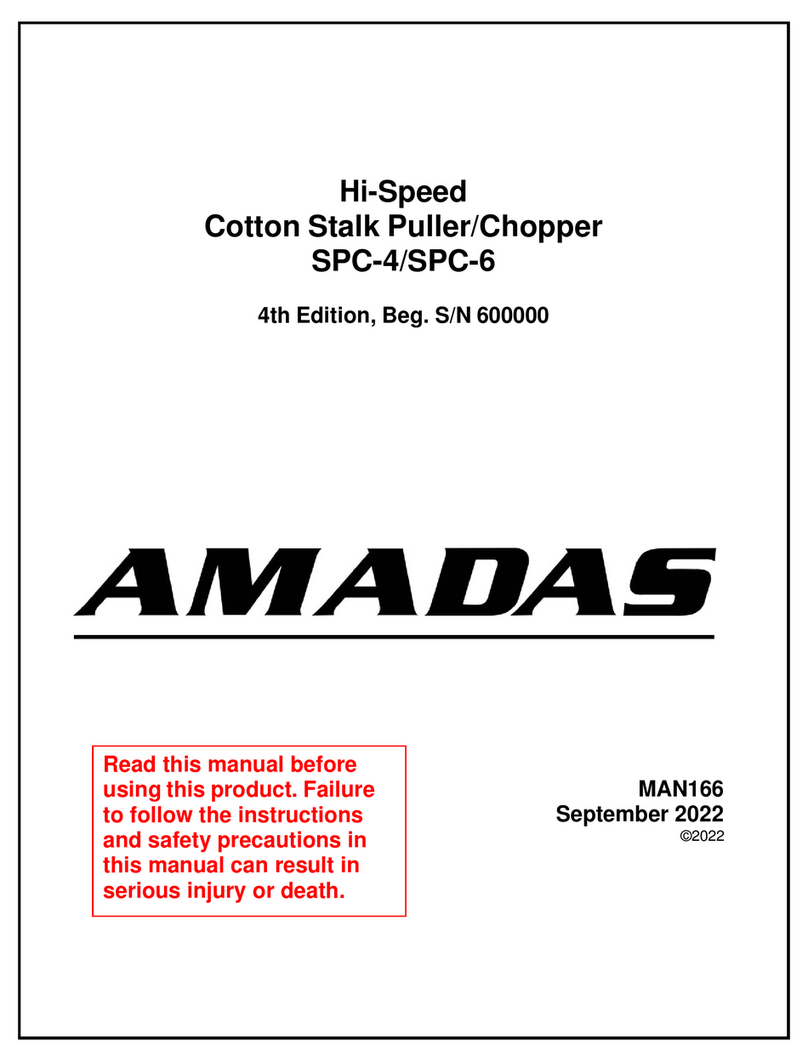AgLand Matador 7900 User manual

Operator’s Manual
June 2011
2011

Replacement Parts
To obtain prompt, efcient service, give your dealer the
following information.
1. Correct stock number of part.
2. Model number of the machine.
3. Serial number of the machine.
The serial number is important in identifying your ma-
chine. It contains information for ordering replacement
parts and options which may vary depending on the
serial number identication.
Measurements are given in U.S. units followed by the
equivalent in metric units. Hardware sizes are given in
inches for the U.S. hardware and millimeters for the
metric hardware.
Serial # on plate inside hitch.
Box 479 Arborg MB, R0C 0A0
Matador 7900
Made in Canada
Model #:
Serial #:

1
Contents
Warranty Registration Form ....................................................................................................................................................3
Introduction .............................................................................................................................................................................5
Safety ..................................................................................................................................................................................6–7
Transport Safety .................................................................................................................................................................................... 6
Operating Safety .................................................................................................................................................................................... 7
Hydraulic Safety ..................................................................................................................................................................................... 7
Safety Decals ...........................................................................................................................................................................8
Specications ..........................................................................................................................................................................9
Assembly ..........................................................................................................................................................................10-12
Wheel Assembly .................................................................................................................................................................................. 10
Moldboard Attachment .......................................................................................................................................................................11
Hydraulic Lift Kit ..................................................................................................................................................................................12
Operation ....................................................................................................................................................................... 13–14
Level Inverter .......................................................................................................................................................................................13
Uneven Fields - Flotation Spring Adjustment.....................................................................................................................................13
Pickup Finger Height - Gauge Wheel Adjustment..............................................................................................................................13
Setting Pickup Speed .......................................................................................................................................................................... 14
Direction of Travel ................................................................................................................................................................................14
Maintenance ................................................................................................................................................................. 15–18
Setting Drive Chain Tension ................................................................................................................................................................15
Roller Drive Chain Replacement ........................................................................................................................................................16
Bearing Replacement .........................................................................................................................................................................16
Replacing or Repacking Wheel Bearings ........................................................................................................................................... 16
Pickup Teeth, Bands, Wear Strips ...................................................................................................................................................... 17
Flotation Spring Adjustment ............................................................................................................................................................... 17
Torque Charts for Bolts and Nuts .......................................................................................................................................................18
Lubrication ............................................................................................................................................................................ 19
Hydraulics Assembly Instructions ................................................................................................................................ 20–21
Troubleshooting ............................................................................................................................................................. 22–23
Warranty ................................................................................................................................................................. Back Cover


I have instructed the buyer on the above described equipment and included a review of the Operator’s Manual, assembly,
maintenance, safety, and applicable warranty policy.
Dealer’s Signature Date
The above Equipment and Operator’s Manual have been received by me and I have been instructed as to the care, adjust-
ments, safe operation, and applicable warranty policy.
Purchaser’s Signature Date
Customer Name:
Address:
City:
Prov/State: Postal/Zip:
Phone No:
Model No:
Serial No:
Dealer:
Address:
City:
Prov/State: Postal/Zip:
Phone No:
Date Purchased:
Check One: Farm Use Commercial Use
AgLand Matador 7900™ Windrow Inverter
LIMITED WARRANTY REGISTRATION FORM
AgLand Industries Inc. warrants to the original owner of the Matador 7900 Windrow Inverter to be free of defects in workman-
ship and material for a period of one (1) year from the date of purchase for farm use (three (3) months from date of purchase
for commercial use). AgLand does not warrant any damage caused by negligence, modications, and/or lack of maintenance
(see Maintenance Schedule in Operator’s Manual).
AgLand will not be liable for the cost of shipping or any other cost incurred for replacement or repair of any parts. AgLand is
not liable for any accidents which may occur from or during the operation of the Matador 7900 Windrow Inverter, or damage
incurred due to Matador failure. The purchaser assumes all responsibility for the care, maintenance and safety.
See back of the Operator’s Manual for complete warranty details.
Failure to return completed registration to AgLand within thirty (30) days of delivery will VOID the warranty.
This form must be lled out by the dealer and signed by both dealer and customer.
Mail to:
AgLand Industries Inc.
Box 479, Arborg, MB
R0C 0A0
DEALER CHECKLIST
Chain tension, checked and adjusted
Pickup, including nger height, adjusted and set
Flotation spring, checked and adjusted
Hydraulic line and ttings checked for leaks and rubbing
moving parts
All reectors in place
Wheel bolts tight
Tire air pressure (32 PSI maximum (221 kPa))
All grease ttings greased
All safety procedures have been reviewed with customer
All warning decals are in place, clean, and legible
Customer has been instructed to review safety and operat-
ing procedures with all operators annually.
I have thoroughly inspected the machine and made adjustments and corrections as needed.
Inspected By Signature Date
White - AgLand Yellow - Customer Pink - Dealer


5
Introduction
The Matador 7900 Windrow Inverter is designed to turn
and move hay swaths for a faster dry down. The Matador
utilizes a low prole, heavy duty pickup with extra width to
allow rapid operation with minimal leaf loss.
The moldboard of the Matador 7900 Windrow Inverter is
a patented design giving a 180˚ turn to the swath when
the machine is operated correctly.
These operating and maintenance instructions have been
compiled from extensive eld experience and engineering
data. Some information is general in nature due to un-
known and varying conditions. However, through experi-
ence and these instructions, you will be able to develop
operating procedures suitable to your particular situation.
Please study this manual from beginning to end BEFORE
operating your new Matador 7900. Pay special attention
to the Safety section in this manual and the safety cau-
tions on your equipment. Should anyone else operate
this equipment be sure that they understand ALL safety,
operating and maintenance information presented in
this manual.
The terms ‘right’ and ‘left’ as used throughout this manu-
al are determined by facing the direction the machine will
travel when in use.
AgLand Industries Inc. is a Canadian owned and oper-
ated company located in central Canada, in the province
of Manitoba. AgLand was founded in 2001 by a group of
innovative young men that transformed their ideas and
expertise into a leading manufacturing company of agri-
cultural crop equipment.
Box 479, Arborg, MB, Canada R0C 0A0
1.888.933.4440
Tel: 204.364.2211
Fax: 204.364.2472
Email: [email protected]
Web: www.aglandindustries.com
The photographs, illustrations, and data used in this man-
ual were current at the time of printing, but due to pos-
sible in-line production changes, your machine may vary
slightly in detail. The Manufacturer reserves the right to
redesign and change the machine as necessary without
notication.
WARNING
Some pictures in this manual show the machine with
shields removed to allow for a better view of the sub-
ject. The machine must never be operated with any of
the shields removed.
Congratulations, you have just purchased the Matador 7900 Windrow Inverter, the only true inverter on the mar-
ket today. To get the maximum benet from your Matador we suggest that you read this manual carefully.

6
Safety
Read this manual completely and understand all oper-
ating instructions and precautions BEFORE attempting
to operate or service your machine.
The safety information given in this manual does not re-
place safety codes, insurance needs, or state/province
and local laws. Make sure your machine meets all stan-
dards required by the local laws and regulations.
Understand that your safety, and the safety of others, is
measured by how you service and operate this machine.
IMPORTANT! Review and understand the positions and
functions of all machine controls before operating this
machine.
WARNING! Do NOT attempt any adjustments, mainte-
nance, troubleshooting, or repairs while machine com-
ponents are moving or activated with pressure.
▪ Lower machine to ground or onto appropriate blocks.
▪ Stop tractor engine and remove ignition key.
▪ Set tractor parking brake prior to leaving operator sta-
tion.
Safety Alert Symbol
The Safety Alert symbol identies important safety mes-
sages in the manual and on the machine.
When you see this symbol, be alert to the
possibility of personal injury or death. Fol-
low all instructions in the safety message
given. This symbol means attention, be
alert, and your safety is involved.
Three Reasons To Follow Safety Instructions:
1. Accidents disable and kill.
2. Accidents cost.
3. Accidents can be avoided.
Slow Moving Vehicle Emblem
The Slow Moving Vehicle (SMV) emblem must be placed on
the rear of the machine and be visible to trafc approach-
ing the machine from the rear while trav-
eling on public roads. Keep the SMV em-
blem clean and replace when damaged
or when emblem materials have faded.
The SMV should only be displayed on the
machine at road speeds less than 25 MPH (40 km/h).
▪ The operator is responsible for complying with all
local regulations regarding transporting agricultural
equipment on public roads and highways.
▪ Ensure all lights and reectors, as required by local
law, are in place, intact, and clean before transport-
ing machine on public roads and highways.
▪ Ensure SMV emblem is clean and properly displayed,
where required by law, before transporting machine
on public roads and highways.
▪ Do NOT allow riders on machine at any time includ-
ing transport of machine on public roads and high-
ways.
▪ Maximum transport speed is 20 MPH (32 km/h).
Reduce speed on rough roads and surfaces.
▪ Use proper retainer on drawbar hitch pin and attach
safety tow chain to tractor prior to transporting ma-
chine on public roads and highways.
▪ When using a ball and socket, make sure the lock-
ing jaws are pinned securely in position.
▪ Do not rely on the pickup lift hydraulic cylinder to
keep the pickup raised. Be sure pickup reel is in
raised position and lever is secured with the pick-
up travel lock pin provided.
Transport Safety
DANGER
DANGER: Indicates an imminently hazardous situation
that, if not avoided, WILL result in death or serious injury
if proper precautions are not taken.
Signal Words
WARNING: Indicates a potentially hazardous situation
that, if not avoided, COULD result in death or serious in-
jury if proper precautions are not taken.
CAUTION: Indicates a potentially hazardous situation that,
if not avoided, MAY result in minor or moderate injury if
proper practices are not taken, or serves as a reminder to
follow appropriate safety practices.
CAUTION
WARNING

7
Operating Safety
▪ Ensure that all components in the hydraulic system
are kept in good condition.
▪ Replace any worn, cut, abraded, attened, or
crimped hoses and/or metal lines.
▪ Do not attempt any poorly executed repairs to hy-
draulic lines, ttings, or hoses by using tape, clamps,
or cements. The hydraulic system operates under
extremely high pressure: 1600 to 2300 PSI (11,033
to 15,859 kPa). Such repair will fail suddenly and
create unsafe conditions.
▪ Wear proper hand and face protection (e.g. face
shield) when searching for a high pressure hydraulic
leak. Use a piece of wood or cardboard as a back-
drop instead of hands. A high pressure concentrated
stream of hydraulic uid can pierce the skin. If this
should happen, seek immediate medical attention
as infection and toxic reaction could develop.
▪ Before applying hydraulic pressure to the system,
ensure all connections are tight and that lines, hos-
es, and couplings are not damaged.
Think Safety,
Work Safely!
▪ REVIEW ALL SAFETY INSTRUCTIONS with all opera-
tors before allowing them to operate the equipment.
Review instructions at least once each year.
▪ All shields and guards must be intact and in po-
sition and securely fastened before operating the
Windrow Inverter.
▪ Only use a tractor equipped with ROPS cab and seat
belt. Be careful when operating close to a road or
building, the machine can throw stones and other
objects during operation.
▪ Emphasize the importance of safety when working
around and operating the machine.
▪ Do NOT allow riders on any part of the equipment at
any time.
▪ Always keep hands, feet, and clothing away from
moving parts.
▪ Always lower the pickup to the ground when parking.
▪ Use a retainer or draw pin to secure the lifting lever
of the pickup before transporting equipment.
▪ Use safety tow chain at all times.
▪ NEVER attempt to unplug the machine when the trac-
tor is running and hydraulic system is pressurized.
▪ Keep hands, feet, and clothing away from the pickup
area when in operation to avoid entanglement haz-
ards. Do not open or remove shields or guards while
machine is running.
▪ Relieve all pressure from hydraulic lines before dis-
connecting them. Before applying pressure to the
system, make sure all connections are tight and
that hoses and lines have not been damaged.
Hydraulic Safety
Hitch and safety chain. Pickup lift with travel lock pin.
Safety

8
Safety Decals
Moving Parts Hazard High Pressure Fluid Hazard
Keep Shields and Guards in Place

9
Specications
AgLand Matador
Model 7900
Dimensions
Overall Width 102” to 104” (259 cm to 264 cm)
Length with rear hitch extended 187” (475 cm)
with rear hitch removed 175” (444 cm)
Height with pickup lowered 46” (117 cm)
with pickup raised 48” (122 cm)
Weight 1,350 lbs. (613 kg)
Tires (4)
Main Tire Size 5.90 x 15
Pressure 30 PSI (207 kPa)
Wheel Hub 4 bolt
Wheel Torque 85 ft-lbs. (115.2 Nm)
Gauge Wheel Tire Size 4.8 x 8.50
Pressure 50 PSI (345 kPa)
Pickup
Width 77” (196 cm)
Clearance* 15” to 17” (38 cm to 43 cm)
Tooth Clearance** 13.5” to 15” (34 cm to 38 cm)
Pickup Tooth Spacing 2.75” (7 cm)
RPM of Pickup Shaft 10 to 400 RPM
Drive System Hydraulic motor,
Roller chain driving two full
width roller drums.
Height When Working 19” (48 cm)
* under pickup when raised
** when raised
Operating Speed
Approximate range* 5 to 10 MPH (8 to 16 km/hr)
* depending on crop conditions
Swath Size
Width up to 36” to 42” (91 cm to 107 cm)
Tractor Requirements
Suggested min. tractor size* 50 HP (37 KW)
Hydraulic Outlets Required
two double acting outlets
1,500 to 2,000 PSI range (10,343 kPa to 13,790 kPa)
Suggested minimum hydraulic ow rate
10 US GPM (38 L/min)
Suggested minimum underframe clearance**
15” (38 cm)
Suggested minimum front and rear wheel tread***
66” (168 cm)
* tractor should be of sufcient size to maintain operator
control in all situations.
** toallowswathtoowfreelyundertractor
*** adjusted to avoid contact with inverter during sharp corners
Some weights and measurements are approximate.
All specications, statements and information shown in
this manual are believed to be accurate at the time of print-
ing. Specications are subject to change without notice.

10
Depending on shipment desti-
nation, the Matador 7900 may
be shipped assembled and
ready for use; or some periph-
erals may be shipped separate-
ly as follows:
1. Wheel Kit
2. Moldboard Attachment
3. Lift Kit (Optional)
Wheel Assembly
If the main frame is standing in a vertical position with
the hitch pointing upward, lower machine to a horizontal
position and secure with blocks. If you have a block and
tackle, you may wish to lift the entire unit off the ground
to assemble and install the wheels.
Assembly
Rear Wheel Installation
Install left and right hand brack-
ets with slotted holes to the bot-
tom (with pipe extended outward
as shown). Move bracket in from
back of frame and attach with
5/8” x 5” bolt and spring wash-
ers (A). Flat washers for slotted
holes only (B).
Install rear wheel hub/axle as-
semblies in axle tubes, leaving
a gap sufcient to clear guards,
hoses, etc. Tighten 1/2” x 1-1/2” set screw and lock nut
(C).
Gauge Wheel Installation
(Small Wheels)
Install gauge wheels with 3/4” x 7” grade 8 bolts in sec-
ond hole from top of adjustment plate. Tighten nuts se-
curely ensuring the wheel turns freely. Install with a nut on
either side of mount bracket. Grease gauge wheels before
use.
Gauge Wheel
Installed
Rear Wheel
Installed
A
BC

11
Moldboard Attachment
Moldboard kit (moldboard sheet not shown)
Moldboard Frame Assembly
1. Install right hand moldboard frame assembly (A)
with 1/2” x 1” bolts, lock washers and nuts; do not
tighten.
2. Install top left long square tube (front tab to outside
of front main frame tab). Use 1/2” x 3-1/2” bolts
from outside of plate at rear (B).
3. Loosely install angles and brackets (C, D & E), DO
NOT tighten at this time.
4. Install lower curved angle (F) on centre, single tab on
main frame (behind pickup), with the tab under the
angle iron. Tighten in the fully forward position.
5. All bolts in the moldboard frame can now be fully
tightened in the following sequence:
a. 1/2” x 1” bolt to the main frame
b. Lower curved angle bolts.
c. All remaining bolts.
6. Install hold down clamp on hoses at lower right.
Moldboard Sheet Installation
1. Install sheet inside moldboard frame shown. Start-
ing with the top right hand front (A), use 3/8” x 3”
carriage bolts, then the top rear (B), use 3/8” x 1”
bolts and nuts.
2. Install the bolts in the lower, curved angle (C) and
tighten all bolts. DO NOT OVER TIGHTEN. Three bolts
are required at the front edge of the moldboard (D).
Some sheets are not predrilled. If this is the case,
drill these holes from the bottom to 3/8” and install
remaining bolts.
Assembly
D
C
AB
A
B
C
D
E
F

12
Assembly
Hydraulic Lift Kit
The pickup lift kit is an optional attachment available for
all Matador Windrow Inverter models.
Installation
1. Attach brackets (A) and (B) to main frame using 3/4”
x 2” bolt (C), do not tighten.
2. Insert bushing (D) into 3/4” hole on horizontal arm
(E). Slide arm (E) between brackets (A) and (B) so
that holes line up. The at washer goes in between
(A) and (E). Tighten to main frame using 3/4” x 3”
bolt.
3. Insert bushing (F) into bottom hole on guide arm (G)
and tighten guide arm to pickup using 1/2” x 1-1/2”
bolt, nut and spring washer.
4. Insert bushing (H) into oval hole on guide arm (G).
From back of arm insert 1/2” x 1-3/4” bolt, using
large at washer (J) to hold bushing in horizontal arm
(E) and tighten with nut and spring washer.
5. Attach hydraulic cylinder to lift kit using pin provided.
6. Install hose connectors (K).
7. If hoses are not already installed, install as shown
above.
8. Tighten all bolts and check to make sure hydraulic
hoses are not rubbing.
9. Attach hoses to cylinder, pressure from tractor to
bottom of cylinder, return hose to the top of the cyl-
inder.
A
B
J
H
G
E
C
D
K
F
pressure
return

13
Operation
Use with a tractor having a minimum of 50 HP (37 KW).
Tractor should have sufcient ground clearance for swath
to pass cleanly under it.
Level Inverter
When hooked up to the tractor the windrow inverter rear
frame should be parallel to the ground when measured
across upper cross tube and rear corner of moldboard
frame (A). If necessary level by changing the hitch tongue
mounting bolt locations in the main frame and/or by in-
verting the tongue in the main frame brackets (B).
The axles can also be pivoted up or down on the main
frame, in their slotted mounting holes (C).
Adjust tractor hitch if further adjustment is required.
Uneven Fields
Flotation Spring Adjustment
If pickup bounces too much due to uneven elds, release
the spring tension. First loosen off top nut (A), then turn
bottom nut (B) counter clockwise. This will put more weight
on the pickup and should help minimize the bouncing ac-
tion.
Pickup Finger Height
Gauge Wheel Adjustment
(Small Wheels)
Check pickup height when in eld position, crop should be
picked up cleanly without gouging the soil. Should adjust-
ment be required:
a. Raise or lower pickup, Figure 1.
b. Remove the nut on the bolt which holds the gauge
wheel on the pickup and place bolt in the desired lo-
cation, Figure 1. Tighten all nuts securely, ensuring
that the wheel turns freely.
Ensure both left and right hand wheels are set at the
same height.
B
A
A
C
B
Figure 1

14
Operation
Setting Pickup Speed
(Hydraulic Motor)
Lower the pickup to the ground. Engage the hydraulic le-
ver on the tractor, which controls the hydraulic motor on
the windrow inverter. The windrow inverter has a valve
that prevents accidentally turning the pickup backward.
The hydraulic system for operating the windrow inverter
consists of two basic components:
1. The hydraulic motor.
2. The adjustable ow control valve.
Adjustable Flow Control Valve
If your tractor has a:
CLOSED CENTRE TRACTOR HYDRAULIC SYSTEM WITH
ADJUSTABLE VALVE:
1. Set the windrow inverter ow control at maximum
setting of 10.
2. Engage the tractor hydraulic system lever.
3. Adjust the tractor ow control valve. If the oil surges
through the system, close the windrow inverter ow
control valve slowly until the surging stops.
4. Further windrow inverter valve adjustments may be
necessary to ensure smooth and complete pickup at
speed travelled.
If your tractor has an:
OPEN CENTRE HYDRAULIC SYSTEM WITHOUT AN AD-
JUSTABLE VALVE:
1. Set the windrow inverter ow control valve in the 0
position.
2. Engage the tractor hydraulic system lever.
3. Set the pickup speed with the windrow inverter ow
control valve to approximately 4 or 5.
4. Further adjustments may be necessary once you are
inverting to ensure smooth and complete pickup at
speed travelled.
Direction of Travel
Start inverting at the same location and direction as mow-
ing started, although the Matador Windrow Inverter will
generally pickup “against the grain” as well. Centre the
tractor and windrow inverter on the swath. Start gradu-
ally, and gear up smoothly, until you are operating at the
desired eld speed.
Adjust the hydraulic ow control on the tractor and/or the
windrow inverter to change the pickup speed as required.
Pickup speed should be sufcient to pickup crop cleanly.
Excessive leaf loss will occur if pickup speed is too fast.
In cereal crops or crops with an “in line” orientation, it will
be necessary to pick up the swath “head rst.”
The hydraulic pickup lift kit makes it easy to raise the
pickup over obstacles in the eld or to skip a swath which
does not need inverting.
With innite variety of crop and eld conditions, only op-
erator experience will indicate best driving, cornering and
adjustment techniques for maximizing the use of your
Matador Windrow Inverter.

15
Maintenance
Use Good Safety Practices When
Working On This Machine
Before doing any maintenance or service on the ma-
chine you must:
□ Park machine on a solid level surface.
□ Disengage all power.
□ Put the tractor transmission in PARK or apply the
tractor parking brake.
□ Stop the tractor engine and remove key from the
ignition.
□ Look and listen. Make sure all moving parts have
stopped.
□ Install the cylinder safety stops, if applicable.
□ Block the inverter securely before working.
Checklist
CAUTION
Daily
□ Lubricate all items as required.
□ Remove all dirt and crop deposits from machine.
After Every 8 Hours Of Use
□ Grease gauge wheel bushings.
After The First 25 Hours Of Use
□ Check sprockets for set screw tightness.
After Every 100 Hours Of Use
□ Grease the sealed bearings on the pickup shaft
(two locations, front roll (two places) and rear roll
(four places).
At The Beginning Of Each Season
□ Review all safety instructions.
□ Carefully inspect all components for excessive wear
or hazardous conditions.
□ Lubricate the machine at all lubrication points to
force out any collected moisture.
□ Check drive chain for correct tension, replace if worn
or damaged.
□ Clean and repack or replace the wheel bearings, if
required.
□ Check tires for correct ination pressure.
□ Tighten bolts.
Setting Drive Chain Tension
1. Adjust tension with pickup pinned in raised position
(A).
2. Inspect and adjust through the access hole provided
in chain cover (B). The correct tension of the chain
should allow for approximately 1/2” (1.3 cm) of de-
ection when slight pressure is applied to the lon-
gest span of chain (C). If required move sprocket (D)
to increase or decrease tension on chain.
3. Check that the chain is not riding up on the sprocket
teeth (especially the large sprocket) as this would in-
dicate a worn out chain which requires replacement.
Regular lubrication with chain lubricant, proper ad-
justment, and replacement of worn chains will en-
sure proper function of the Matador and prolong the
life of the sprockets.
A
B

16
Roller Drive Chain Replacement
Replace worn or damaged chains as follows:
1. Lower pickup completely.
2. Remove chain cover.
3. Raise pickup and secure with pin.
4. Remove the connector link from the chain and re-
move chain from the sprockets.
5. Replace worn sprockets and bearings. (Ensure all
sprockets are securely tightened.)
6. Install new chain.
7. Move sprocket (A) to allow for approximately 1/2”
(13 mm) deection when slight pressure is applied
to the longest span of the chain (B).
8. Reinstall chain cover.
Bearing Replacement
Sealed ball bearings are held in position on the shaft by a
locking collar which is rotated to lock the assembly on the
Maintenance
B
A
shaft and secured by a set screw. To remove bearing:
1. Loosen set screw.
2. Use a drift punch inserted in the drift pin hole to
rotate and loosen the locking collar (A). Rotate the
locking collar counter clockwise.
3. Remove the locking collar.
4. Support the shaft, for easier assembly later.
5. Remove the bolts for the bearing anges.
6. Slide the bearing and the anges from the shaft.
Note: Cleaning paint and corrosion from the shaft
will make removal easier.
7. Put on the new bearings and anges ensuring the
bearing inner race is turned in a counter clockwise
direction.
8. Install bolts ensuring the bearing is straight.
9. Replace locking collar on the shaft. Rotate the lock-
ing collar in direction of shaft rotation until lightly en-
gaged. Tighten the collar by tapping it with a drift pin
punch inserted in the drift pin hole rotating it further
clockwise.
10. Tighten set screw.
Replacing or Repacking Wheel Bearings
1. Remove wheel hub and disassemble.
2. Clean bearings, seals, caps, washers, nuts and hubs
with kerosene or other solvent.
3. Replace bearings or seals if worn or damaged.
4. Pack bearing cones and seals with No. 2 multipur-
pose lithium grease or equivalent.
5. Reassemble hub and bearings.
a. Press oil seal very lightly against the shoulder on
A
Bearing
Locking Collar
Spindle
Cone
Cup
Grease Fitting
Wheel
Bolt Hub
Washer
Cotter Pin
Hub Cap
Slotted Nut
Seal

17
the spindle.
b. Press cups against the shoulder in the hub.
c. Press sleeve to the shoulder in the hub.
d. Place hub on shaft taking care not to damage the
seal.
e. Adjust the wheel bearing nut until there is a no-
ticeable drag while turning the wheel. Do not back
the nut off.
f. Secure nut with a cotter pin.
Pickup Teeth, Bands and Wear Strips
Check for bent, broken, or loose parts. If it is necessary to
replace teeth or related parts, proceed as follows:
1. Ensure that pickup is blocked securely. Loosen the
bolts, holding the band(s) on pickup. Slide band for-
ward and remove the band from the bolts.
2. Should the plastic wear strips require removal and
replacement, drill out or carefully grind off the “pop”
rivets. Replace strip with new rivets.
3. Install new teeth or band(s). Use only the hardened
washers supplied as original equipment from the
manufacturer.
two bottom bolts
Flotation Spring Adjustment
Set spring tension as follows:
Lower pickup to ground, attach a pull scale with a capacity
of up to 100 lbs. (45 kg) to the wind guard crosstube. Cor-
rect tension on the scale should be approximately 50 lbs.
(23 kg) in order to just begin to raise pickup. To lighten
tension, loosen top nut (A) then turn bottom nut (B) coun-
ter clockwise until desired tension is reached. Turn nut (B)
clockwise if more tension is needed.
Maintenance
Band
“Pop” Rivets
Teeth
Plastic Wear Strips
Hardened Washer
B
A

18
Inch Torque Chart for Bolts and Nuts
Standard Torque Requirements Foot-Pounds
Use this chart as a guide when tightening bolts/nuts
which do not have special torque requirements.
Bolts Locknuts
Bolt
Diameter
(inches)
SAE
Grade 5
Plated
W/ZnCr
SAE
Grade 8
Plated
W/ZnCr
Grade B
with GR5
Bolt
Grade C
with GR8
Bolt
1/4 112* 157* 61* 86*
5/16 229* 324* 125* 176*
3/8 34 48 19 26
7/16 54 77 30 42
1/2 83 117 45 64
9/16 120 169 65 92
5/8 165 233 90 127
3/4 293 413 160 226
7/8 473 667 258 364
1708 1000 386 545
SAE Grade 5 SAE Grade 8
*Torque values are inch-pounds.
Metric Torque Chart for Bolts and Nuts
Standard Torque Requirements Foot-Pounds
Use this chart as a guide when tightening bolts/nuts
which do not have special torque requirements.
Metric Bolt Markings & Torque Values
Metric bolts are identied by the grade number stamped
on the head of the bolt or on the surface of metric nuts.
The higher the number, the greater the strength of the
bolt.
Bolt
Diameter
Grade
8.8
Grade
10.9
6mm 60* 108*
7mm 108* 168*
8mm 18 23
10mm 30 45
12mm 55 75
14mm 85 120
16mm 130 175
18mm 170 240
*Torque values are inch-pounds.
8.8 10.9
Maintenance
Note: For inch and metric bolts and nuts:
▪ These values are based on clean, dry threads. Reduce the value by 10% when a lubricant is used. Reduce
the value by 20% if new plated bolts are used.
▪ Bolts threaded into aluminum must have two diameters of thread engagement and may require 30% more
reduction in the torque.
Table of contents
Other AgLand Farm Equipment manuals
Popular Farm Equipment manuals by other brands

Accles & Shelvoke
Accles & Shelvoke CASH Cowpuncher .22R Original instruction manual
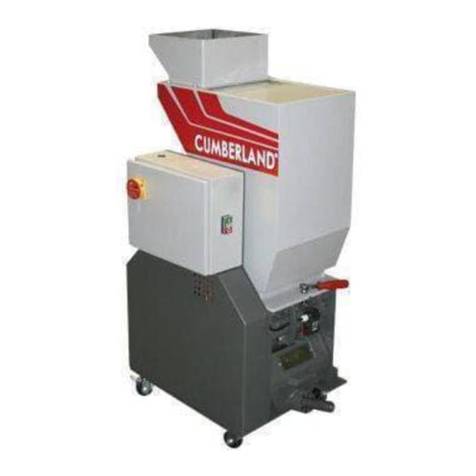
Cumberland
Cumberland 6500 Series Operation and installation manual
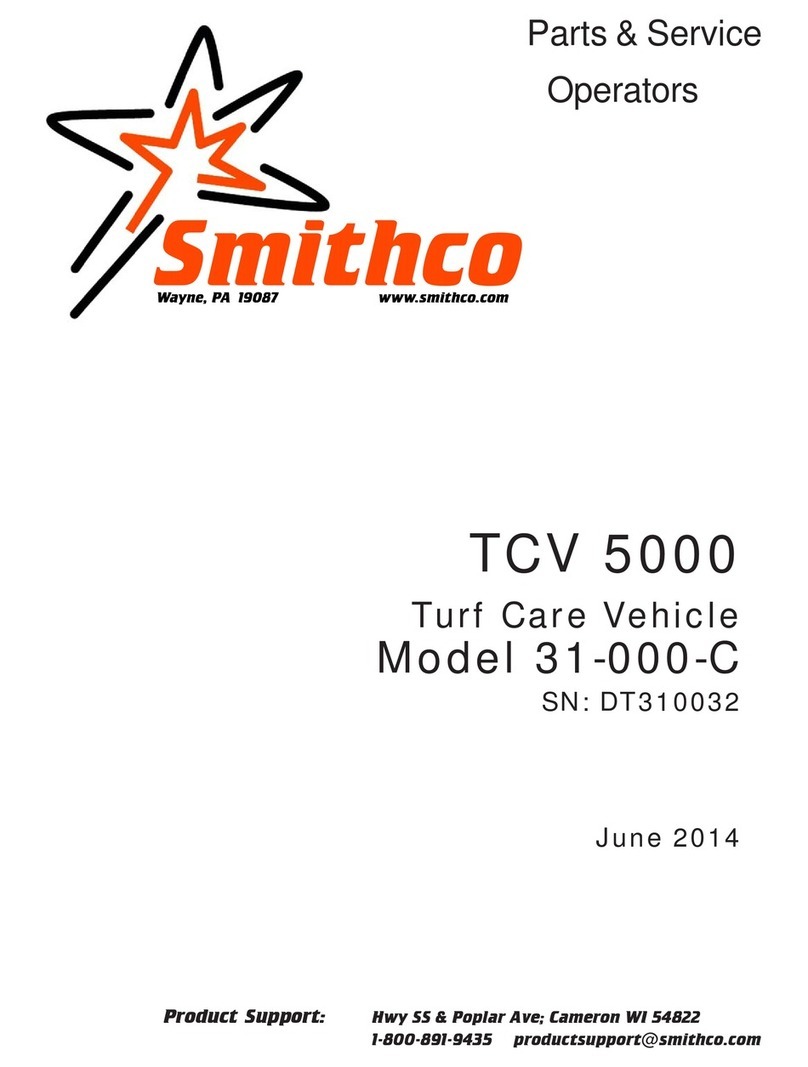
Smithco
Smithco TCV 5000 Parts & Service operators
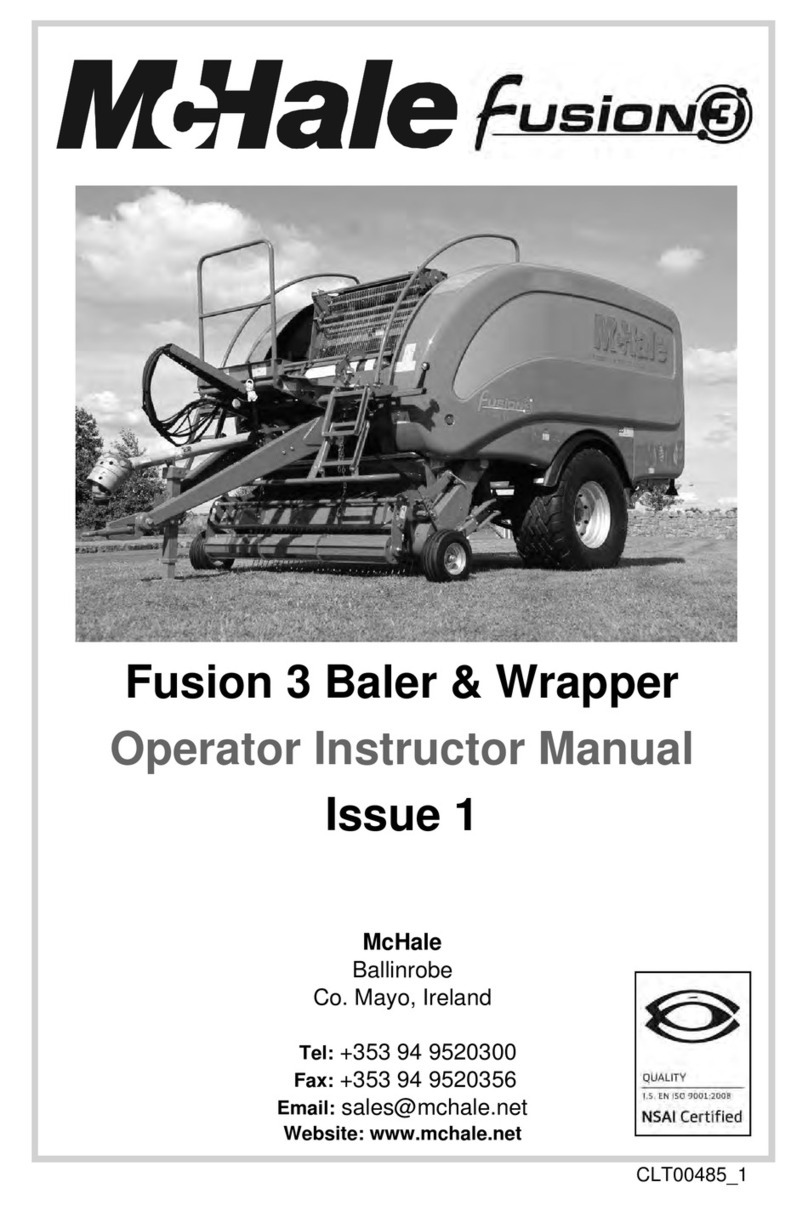
McHale
McHale Fusion 3 Operator Instructor Manual
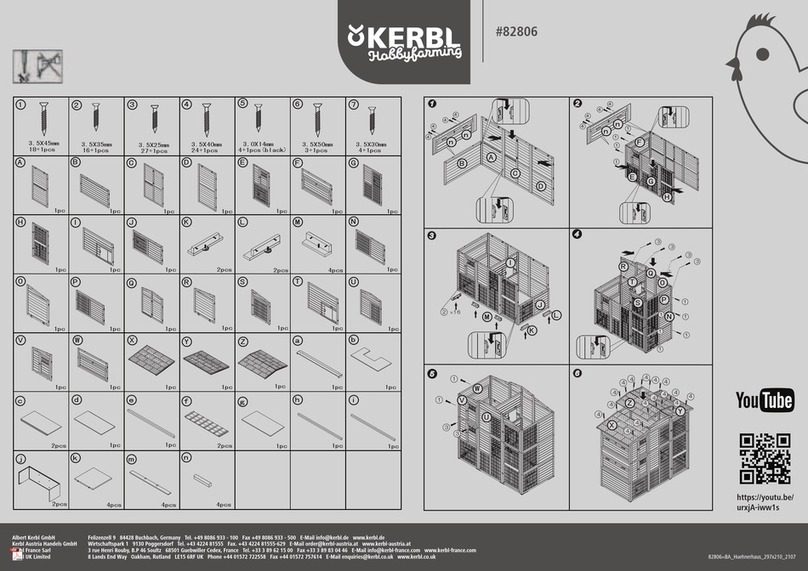
Kerbl
Kerbl 82806 instruction manual
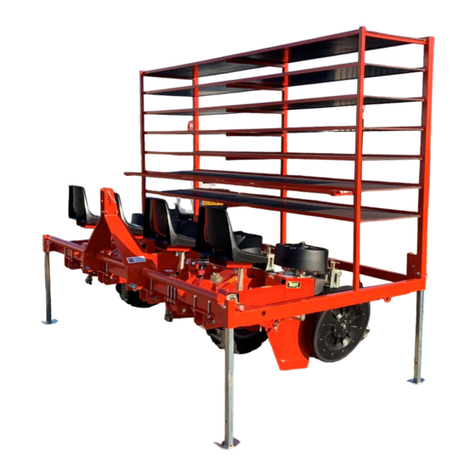
Checchi & Magli
Checchi & Magli TEXDRIVE BEST Use and maintenance manual
